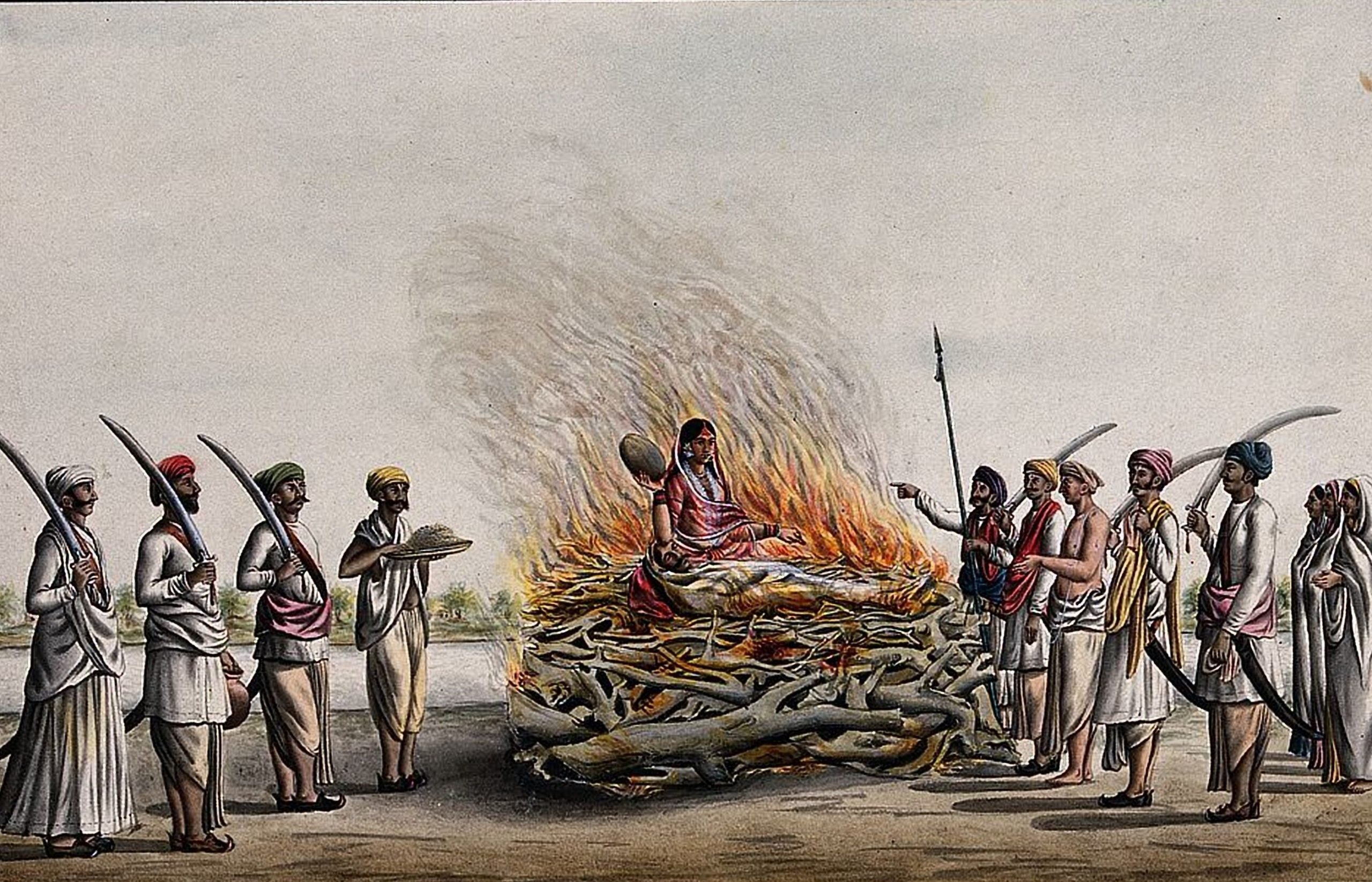In various continents, cultures abound, each having spiritual and socio-economic implications. In many societies, these cultures have harmed the populace, leading to its ban.
In this article, We are going to talk about an ancient culture that has been practiced in India and tell you about other countries that adopted it, but first, let’s talk about what is SATI?
Meet The Tribe That Offers Their Wife As Gifts To Their Visitors
What is Sati?
SATI also called Suttee, is a practice among Hindu communities where a recently widowed woman, either voluntarily or by force, immolates herself on her deceased husband’s pyre. The woman who immolates herself is, hence, called a Sati which is also interpreted as a ‘chaste woman’ or a ‘good and devoted wife’.
What is the purpose of Sati?
According to ancient Hindu customs, sati symbolised closure to a marriage. It is a voluntary act in and a sign of being a dutiful wife. A woman willingly follows her husband to the afterlife. It was, therefore, considered to be the greatest form of devotion of a wife towards her dead husband.
Sati or suttee is an ancient Indian practice in which a widow gets herself burnt to ashes during her late husband’s funeral pyre.
There were several ways of performing the Sati, The widow will be first required to place her hand on the Sati stone for remembrance, next, she will be presented with three options, to drink poison, to cut her neck with a sharp object or alllow herself to be snake-bitten.
The World’s Biggest Family: Christian Man Who Has 39 Wives
Thereafter, she could either lie next to the dead body, walk into the pyre, or sit on the pyre and light herself. Some communities perform the last honour by building a hut for the woman and her deceased to perform the pyre. Others place the name on the pyre while the woman walks into it.
READ ALSO: See Top 5 Richest Muslim Women In The World (Photos)
This act, hailed as heroic, was first adopted by the royal families of the Kshatriya caste before it became forcefully practised between the 15th and 18th century. Interestingly, unlike the families of the Kshatriya, the women of the Brahmin caste were excluded from this practice because the Brahmins believed that because they belonged to this caste (also regarded as a high caste), their caste allowed them naturally attain purity hence there was no need to perform Sati.
While Sati spread to Russia, Fiji and Vietnam, some historians claim that this practice might not have been indigenous to India but brought to them from some other cultures like Scythian invaders earlier in their history.
If the man had several wives, only one of the wives, his preferred was granted the privilege of being immolated with him. The wife who performed this was also envied by the others and her family was treated with respect.
Widows who refused to die with their deceased were pressured into doing this especially if she had no children. She could only be free from Sati if she was pregnant or menstruating.
See Tribe In Nigerian Where Women Don’t Wear Clothes (Photos)
Things started to take a different turn in the 19th century after Raja Ram Mohan Roy began the fight to reform the Hindu society. A feminist, he founded the Brahmo Samaj, a sect of Hinduism that believes in One God- monotheism.
Fully accepting western education, he became vocal against the Sati system, casteism, child marriage and polygamy. He advocated for widows to remarry. His effort caught the attention of Lord William Bentinck, the then Governor-General of British India, who worked with him to place a ban on Sati practice via the famous Regulation XVII in 1829 that situated Sati as illegal and punishable by courts.
Follow Us On Facebook
Post Disclaimer
The opinions, beliefs and viewpoints expressed by the author and forum participants on this website do not necessarily reflect the opinions, beliefs and viewpoints of Anaedo Online or official policies of the Anaedo Online.

